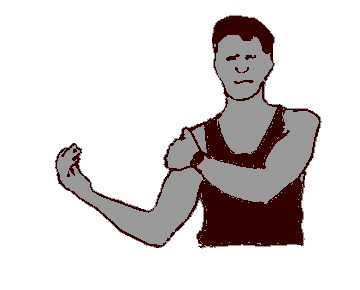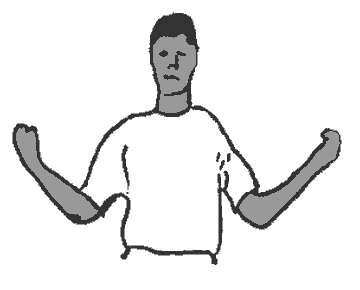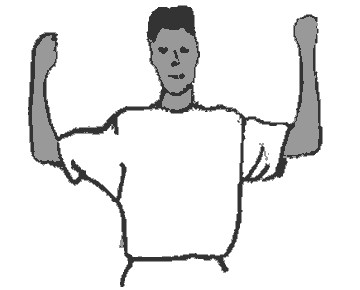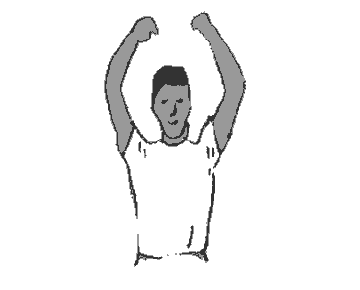|
|
|---|
Learning Shoulder Openings:- Start Position
- Standing or seated. Keep your spine long, pelvis neutral, scapulas anchored.
- Bring your right forearm up and to the side with the palm uppermost. Place the finger tips
of your left hand over the back of the fleshy part of your right shoulder (posterior deltoid muscle).
Learning Shoulder Openings:- Action
- Gently zip and hollow, and breathe naturally.
- Move your right hand backwards as far as it will comfortably go.
- (Without moving your right hand): Gently move your right elbow forward. With the fingers of your left hand,
check that the posterior deltoid stays relaxed.
- Hold for a count of 3 seconds.
- Repeat three to five times each side.
Comments
- You are working the muscles that cover the lower part of your shoulder blade!
Don't be surprised if they feel strain because these muscles are very often weak.
- Once you have learned the basic exercise, proceed to the next step!
(Scroll right>>>>....)
|
Learning Shoulder Openings

| | Once learned, three alternatives:- |

|
 |
 |
Shoulder Openings:- Start Position
- Standing or seated. Keep your spine long, pelvis neutral, scapulas anchored.
- Bring both forearms up (see alternatives above).
Shoulder Openings:- Action
- Gently zip and hollow, and breathe naturally.
- Move your hands backward as far as they will comfortably go.
- Gently move both elbows forward.
- Hold for a count of 3 seconds.
- Repeat two to four five times in each of the three alternative positions.
|
What it does
- Rotator cuff re-alignment: You are working some of the rotator cuff muscles that pull the head of
the humerus away from where it rubs against the bones at the top of the shoulder blade (acromion etc.).
Stated another way, you protect against shoulder impingement injuries. These injuries are very common
and easily avoidable. They include:-
- Supraspinatus tendon tear
- Biceps tendonitis
- Rotator cuff bursitis and tear
Strengthens the Infraspinatus and Teres minor against possible injury.
Watch Points
- Keep the muscle under your left finger tips relaxed:
- Keep your spine long and relaxed.
- Anchor your scapulas throughout.
Reference
Shirley A Sahrmann: Diagnosis of and Treatment of Movement Impairment Syndromes
Publ. Mosby 2002
© Bruce Thomson, EasyVigour Project
scroll up^^^^.....
|



